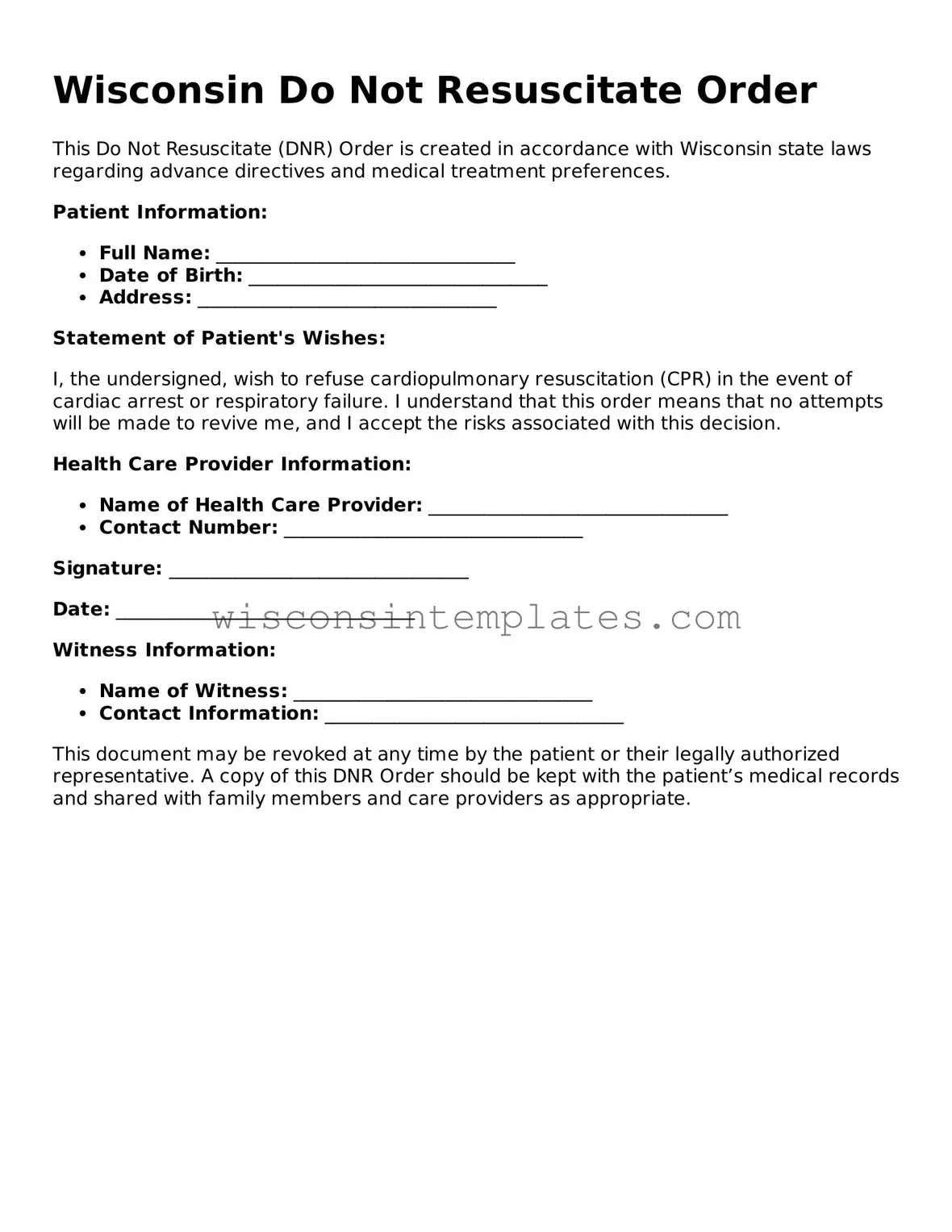In Wisconsin, the Do Not Resuscitate (DNR) Order form plays a crucial role in guiding medical decisions for individuals who wish to forgo certain life-saving treatments in specific situations. This legal document allows patients to express their preferences regarding resuscitation efforts, particularly in cases where they are unable to communicate their wishes due to medical conditions. The form must be completed and signed by a qualified healthcare provider, ensuring that it reflects the patient's informed decision. It is important for individuals to understand that the DNR Order only applies to cardiopulmonary resuscitation (CPR) and does not affect other medical treatments. Families and healthcare providers are encouraged to have open discussions about the patient's values and desires, making the process more transparent and respectful. Additionally, the DNR form must be readily available to emergency responders and medical staff, as they rely on it to honor the patient’s wishes during critical moments. Understanding the nuances of this form can empower individuals to take control of their healthcare choices, providing peace of mind for both patients and their loved ones.
